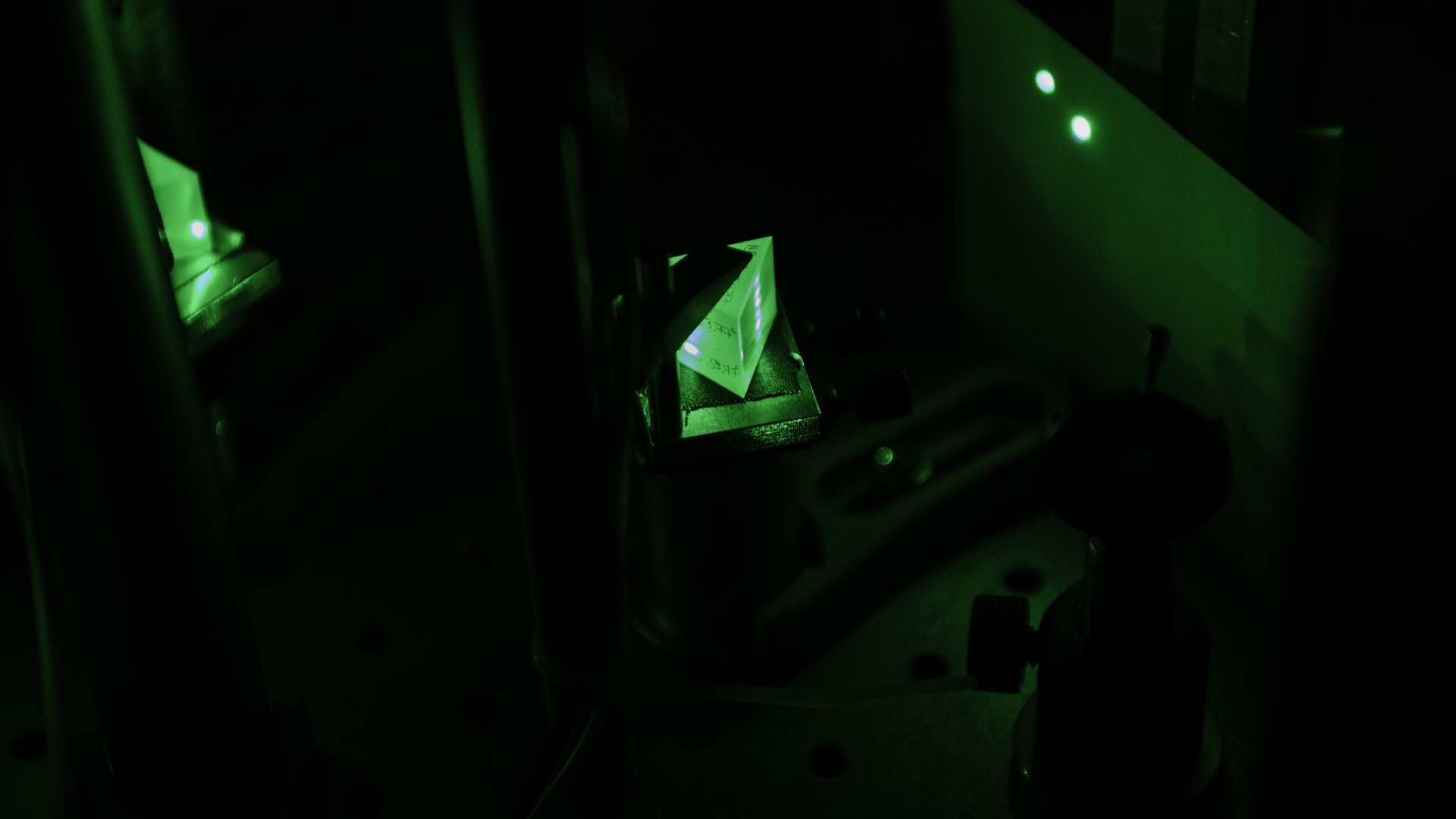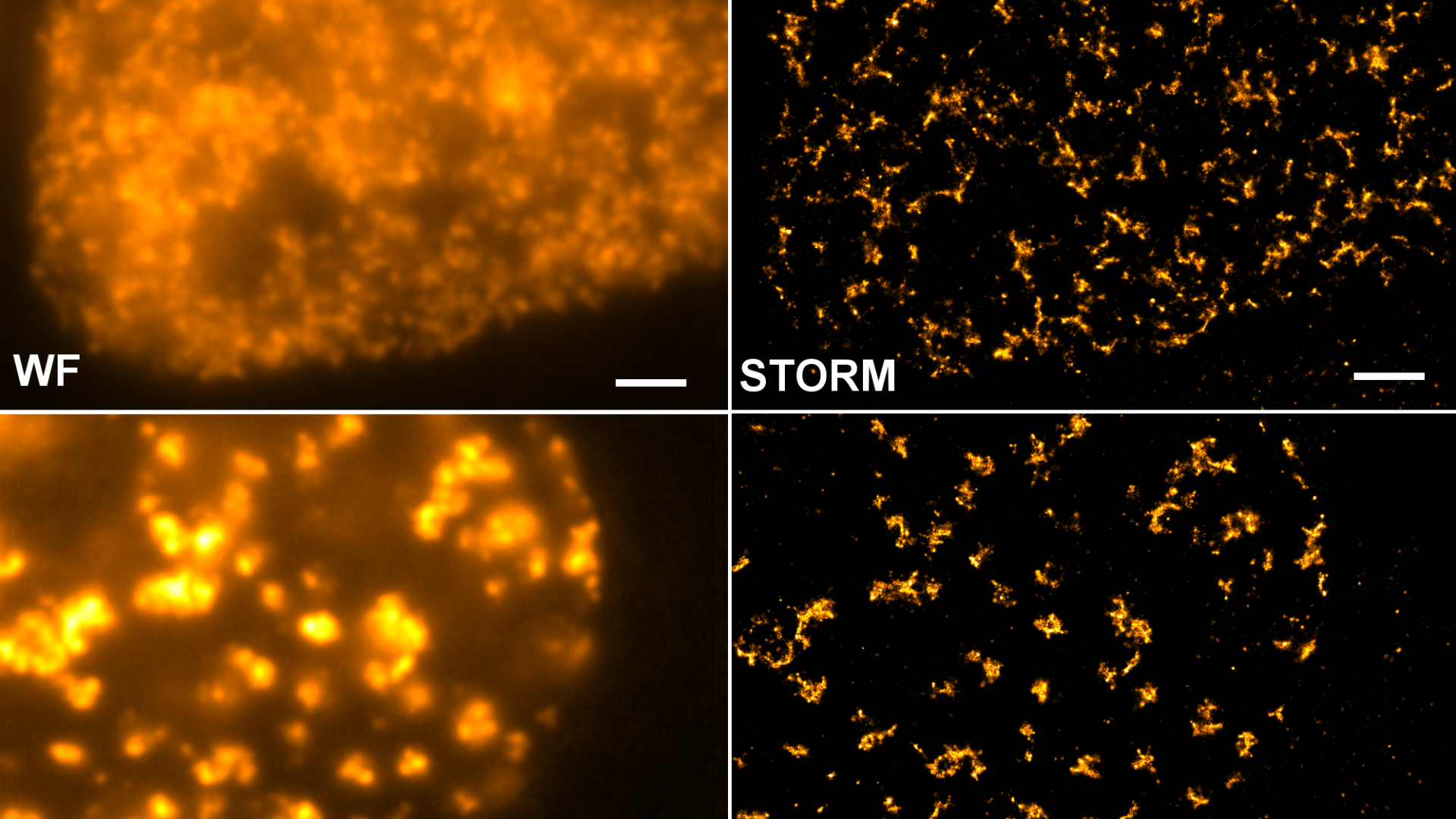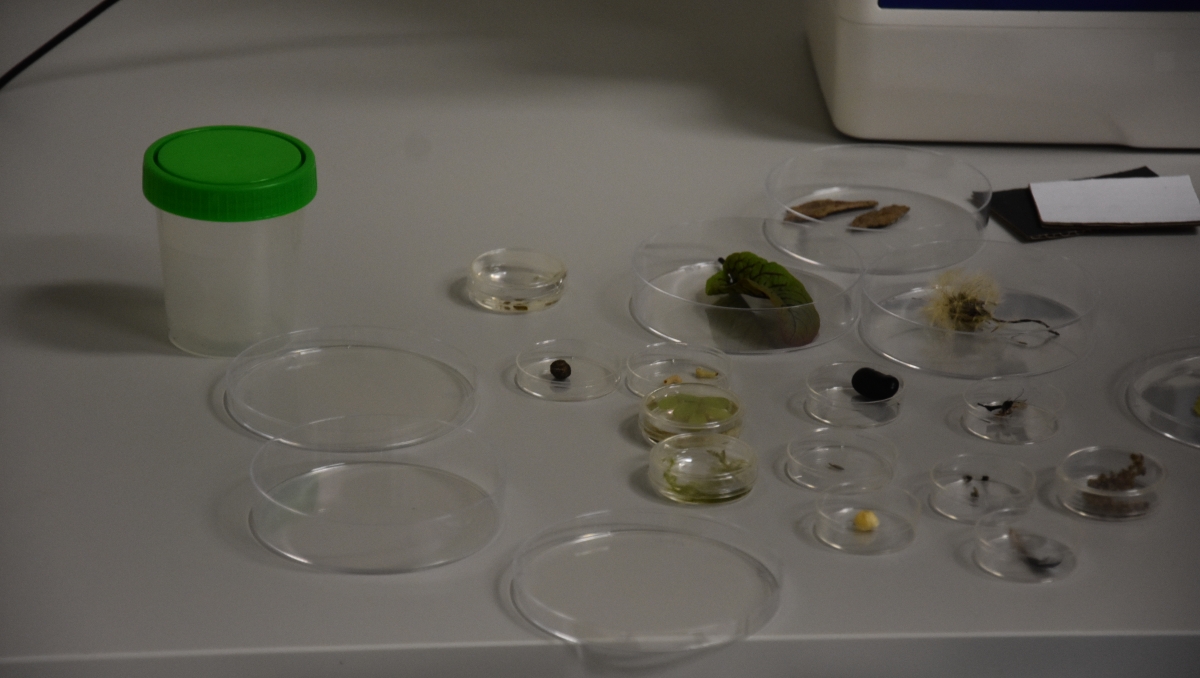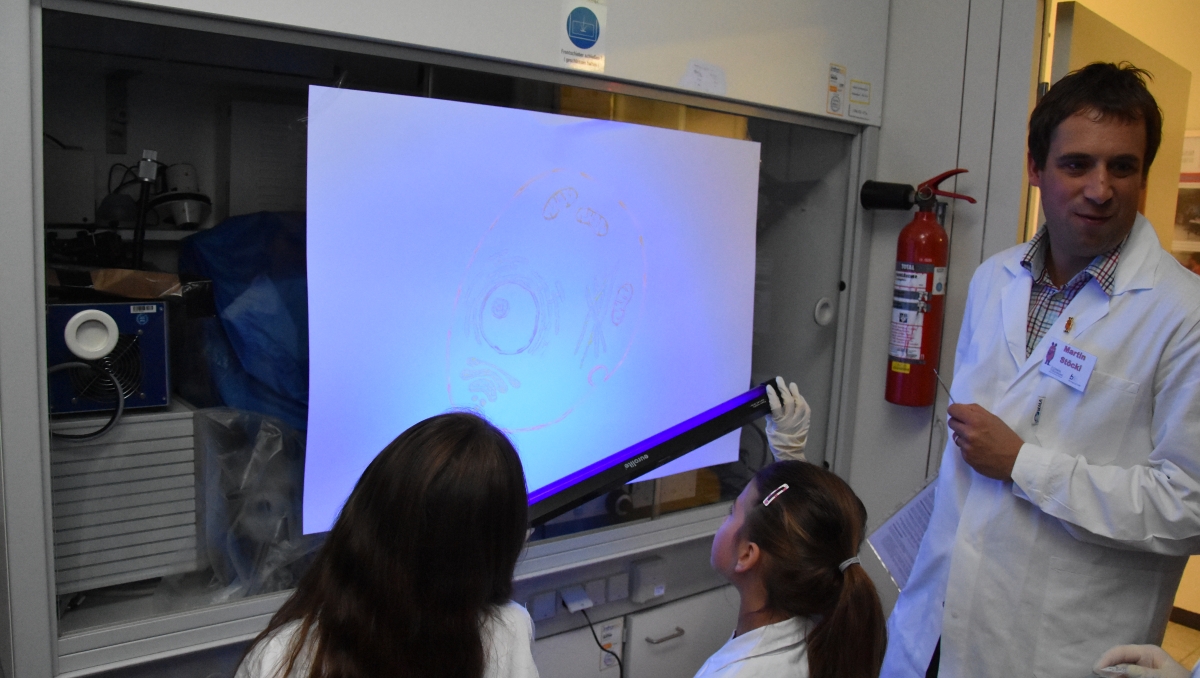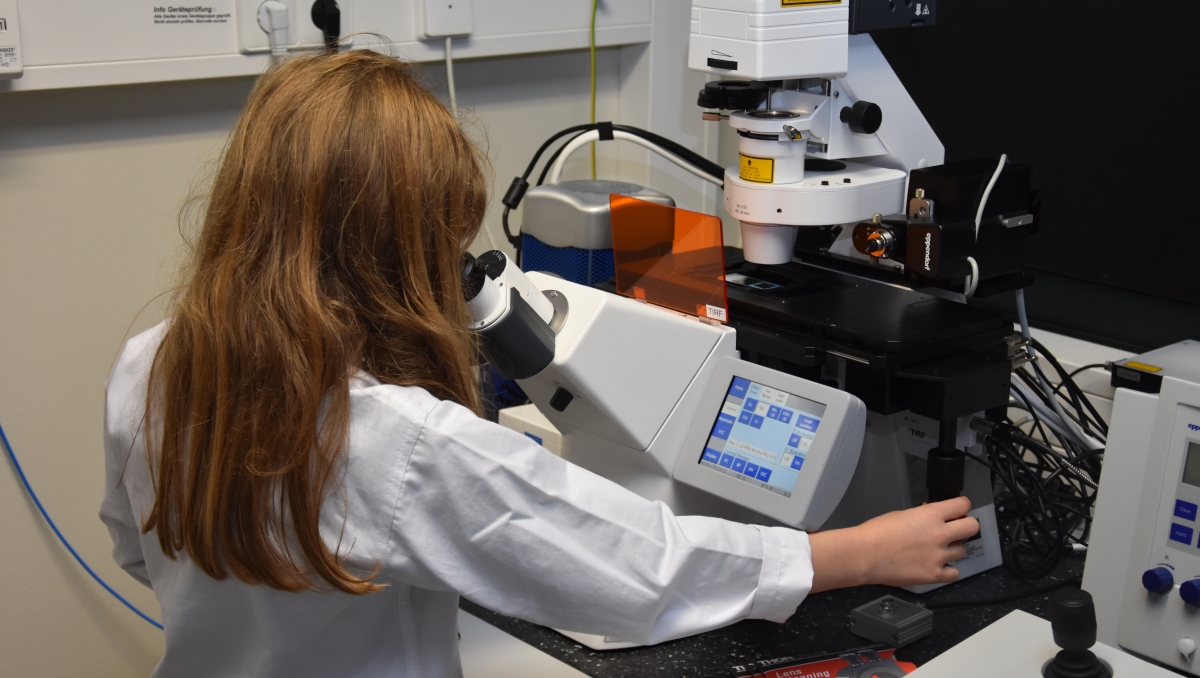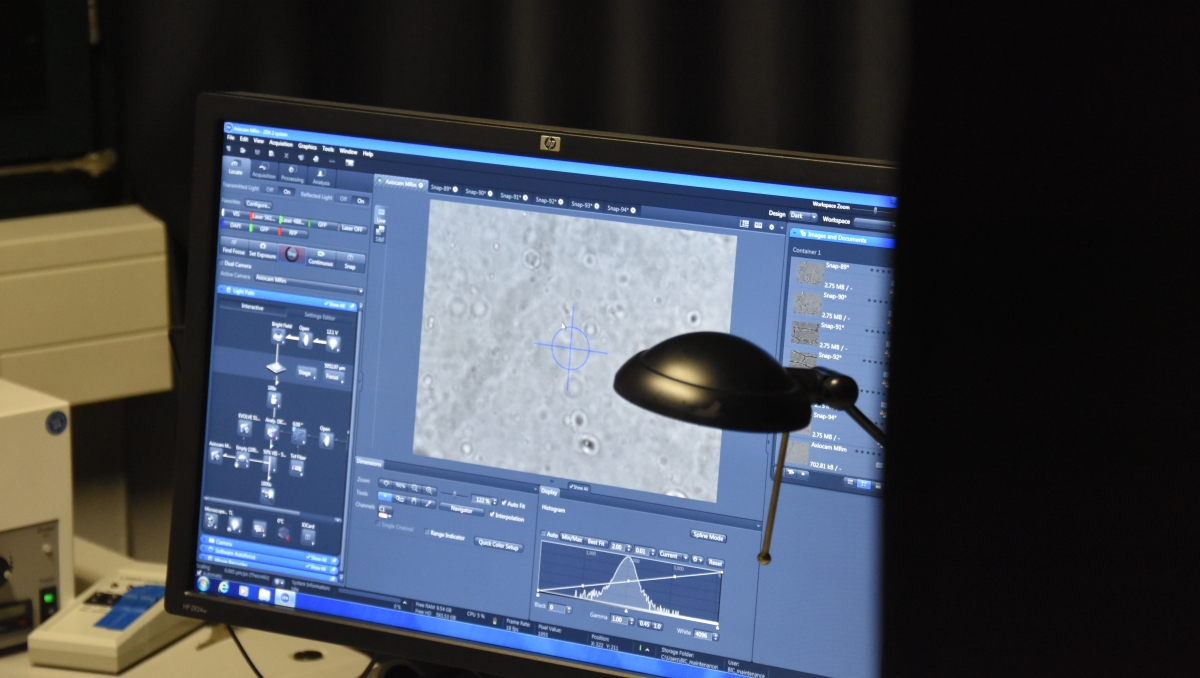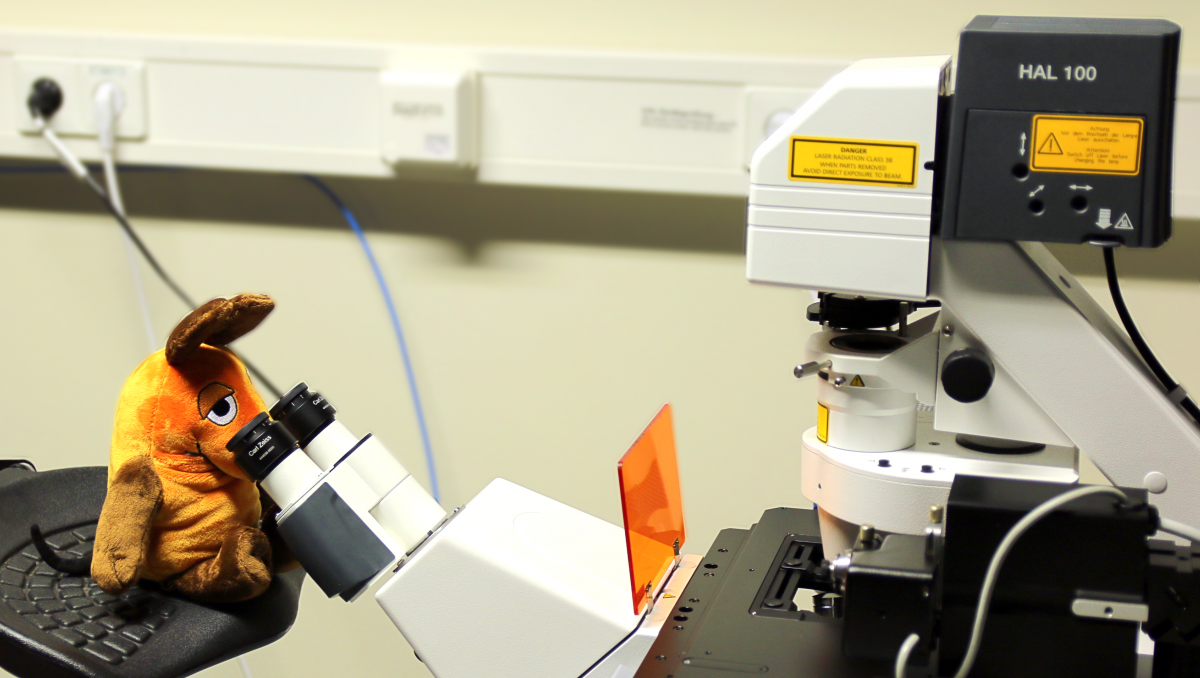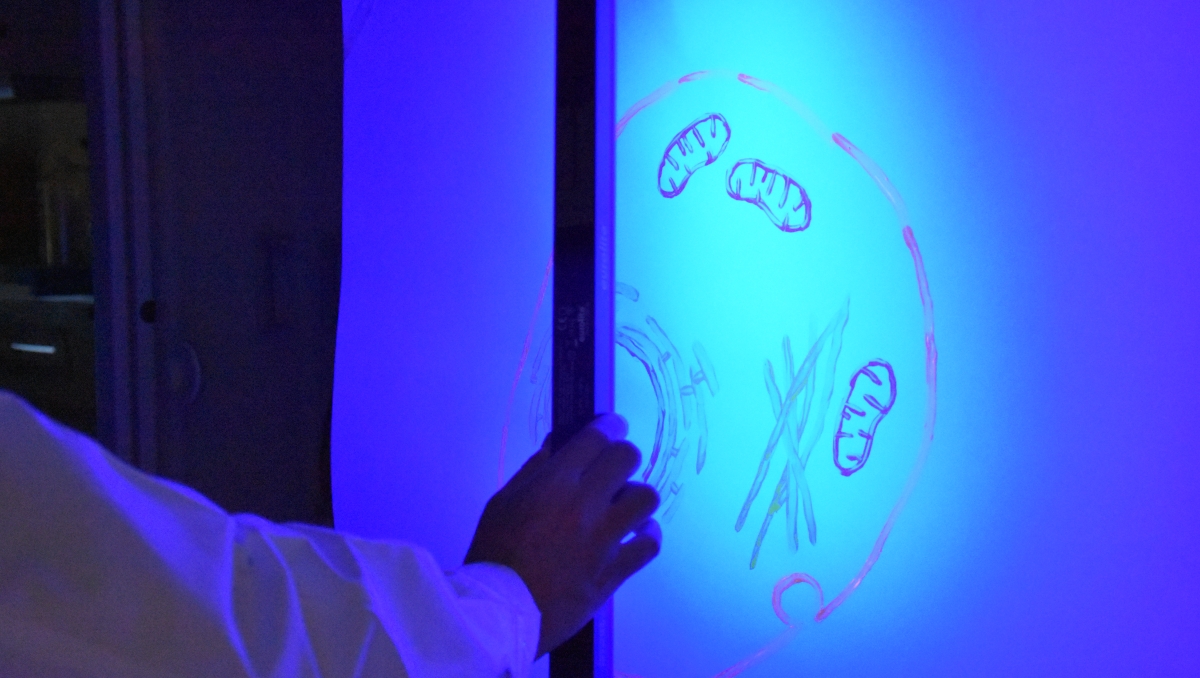- 1Core facilities: Why shared infrastructure is the best kind of infrastructure
- 2Was sind Core Facilities?
- 3Zitat Elisa May: Core Facilities
- 4Warum Core Facilities?
- 5Das Ziel von Core Facilities?
- 6Video mit Elisa May (mit englischem Untertitel)
- 7Welchen Nutzen zieht die Forschung aus den Core Facilities?
- 8Zitat Elisa May: Vernetzung
- 9Aus Nutzerperspektive
- 10Wesentlich besserer Lerneffekt
- 11Zitat Helmut Cölfen
- 12Core Facilities an der Universität Konstanz
- 13Fünf Core Facilities im Fachbereich Biologie
- 14Das Bioimaging Centre (BIC)
- 15Zitat Alice Krebs
- 16Das Bioimaging Centre_2
- 17Bilderstrecke Bioimaging Centre
- 18Angebot und Nachfrage
- 19Zitat Elisa May: Technologien
- 20Wer kümmert sich um die Daten, die in den Core Facilities erhoben werden?
- 21Im Austausch mit der Gesellschaft
- 22Bilderstrecke Maus-Türöffner-Tag 2017
- 23Elisa May: Lebenslauf
Core facilities: Why shared infrastructure is the best kind of infrastructure
What actually are core facilities?
To find out, we asked Professor Elisa May, the director of the Bioimaging Centre (BIC) at the University of Konstanz and founding chairwoman of the German BioImaging − Society for Microscopy and Image Analysis (GerBI-GMB). She explains that the term “core facility” comes in part from the Latin “facilis” for “easy, without difficulty, convenient”. Core facilities are therefore at their core “centres that make research easier and more convenient to carry out”.
Such infrastructure is mainly comprised of laboratories in which state-of-the-art and well-maintained equipment is pooled and made accessible at a single location to both internal and external users for research purposes. Other core facilities also accept samples for analysis and send the measurement results to the users. A third variety provides specialist knowledge that is indispensable for research – in the data analysis or the visual data processing fields, for example.
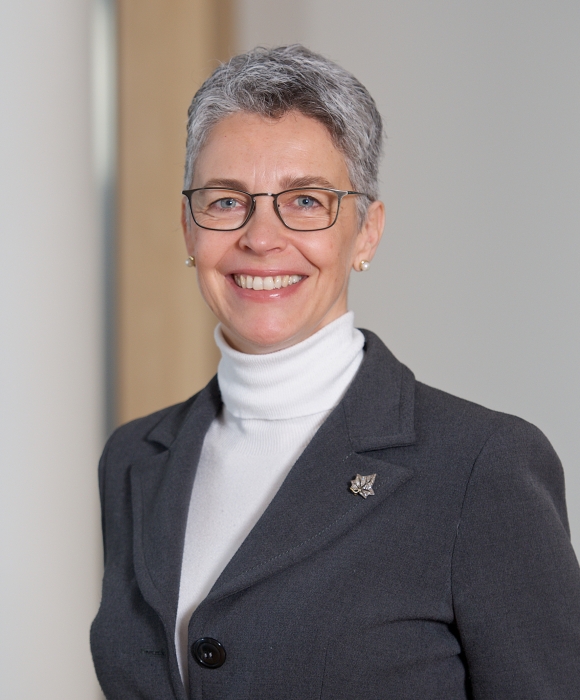
“Core facilities are centres that make it easier to carry out research.”

Why core facilities?
To carry out groundbreaking research without state-of-the-art technology is inconceivable in this day and age. Modern science is confronted with the challenge of providing state-of-the-art technology that can be matched with highly specialized technical knowledge, which is expensive, especially in regard to ever shorter innovation cycles. Core facilities can provide some relief here. Conventional research infrastructure is traditionally assigned to individual professorships or installed in specific departments.
Viewed from both a scientific and an economic standpoint, however, it makes little sense to have these areas set up their own large-scale equipment. Instead, research infrastructure is increasingly being consolidated within shared and sustainable centralised facilities for use by researchers from different disciplines.
Not only does this concept suit the University of Konstanz, but it has been an active part of our university since its foundation:
This vision of research infrastructure that is open to researchers from a spectrum of academic disciplines has always been matched by the aim of advancing collaborative and interdisciplinary top-level research.
What is the purpose of core facilities? To ensure that all researchers at the University of Konstanz, regardless of their departmental affiliation, career stage or personal equipment, have (A) access to first-class research equipment, (B) to create opportunities to interact and collaborate in joint projects, and (C) to pool competencies and expert knowledge, all in a cost-efficient and sustainable way.
In an interview, Elisa May highlights the advantages of setting up shared equipment centres and the benefits for both researchers and students.
How does research benefit from core facilities?
Core facilities are not only nice to have, but have a real benefit for research. A recent survey of the publications resulting from research projects that utilized one or more of the core facilities from the faculty of sciences at the University of Konstanz counted 570 such publications over a four-year period. 260 of these came from the Department of Biology alone – a significant number, explains Elisa May.
“It is interesting to note that around a quarter of these publications were produced through collaboration in different research units.” Core facilities also offer the opportunity to set impulses for new collaborative research projects. “Working at a core facility provides us with a very good overview of our users and their research projects, which can help interlink parties interested in collaborating in future projects,” says May. “This networking potential represents an added value of the core facilities.”
Core facilities can also open up new methods and fields of application through their own research contributions. These highly interdisciplinary projects usually involve the development of new technologies that are not (yet) commercially available. The Bioimaging Centre, for example, has a development laboratory where biologists and physicists work side by side to develop and use novel laser light sources to manipulate cells with light.
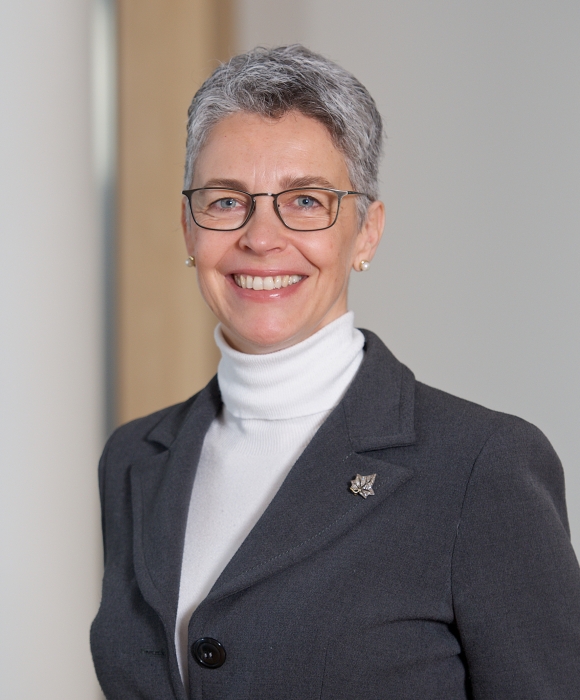
“This networking potential is an added value of the core facilities.”
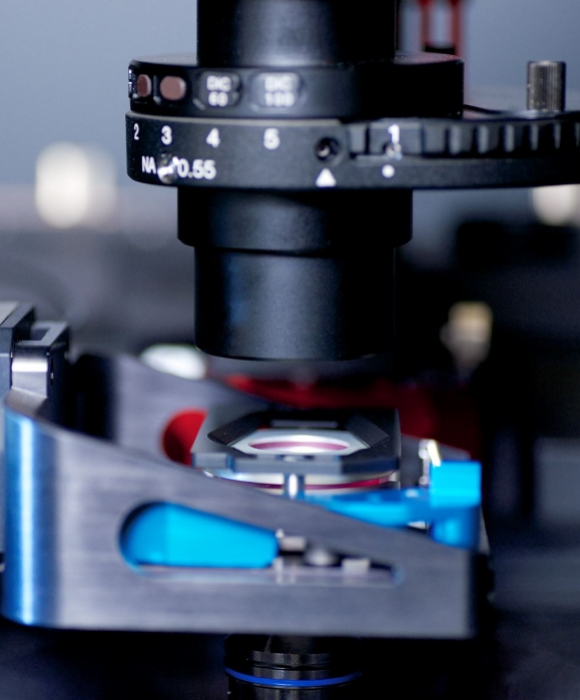
From the users’ perspective
Professor Helmut Cölfen, Professor for Physical Chemistry at the University of Konstanz and spokesperson for the Collaborative Research Centre 1214 “Anisotropic Particles as Building Blocks: Tailoring Shape, Interactions and Structures”, regularly uses a number of the university’s core facilities. These include the Bioimaging Centre, the Electron Microscopy Centre, the NMR Core Facility, the Nanostructure Laboratory and the Particle Analysis Centre.
He also sees primarily advantages in the bundling of research infrastructure into core facilities: “Expertise can be bundled and the effective use of the equipment is thus ensured. All in all, this means that instead of individual groups having no or limited access to equipment, all of our researchers can use it, including and especially our early career researchers, who have little or no equipment of their own.”
Teaching also benefits greatly from the core facilities, he continues: “The students in my master's course “Nanochemistry and Nanoanalytics”, for example, can observe the analytical techniques discussed in class, in small groups, in real time, in such core facilities such as the Particle Analysis Centre or Nanostructure Laboratory. They may even have their own samples processed.
After some training, it is also possible for them to use some equipment to carry out the necessary measurements on their own. Such experiences increase the learning effect and build on the theoretical knowledge gained in the lecture”.
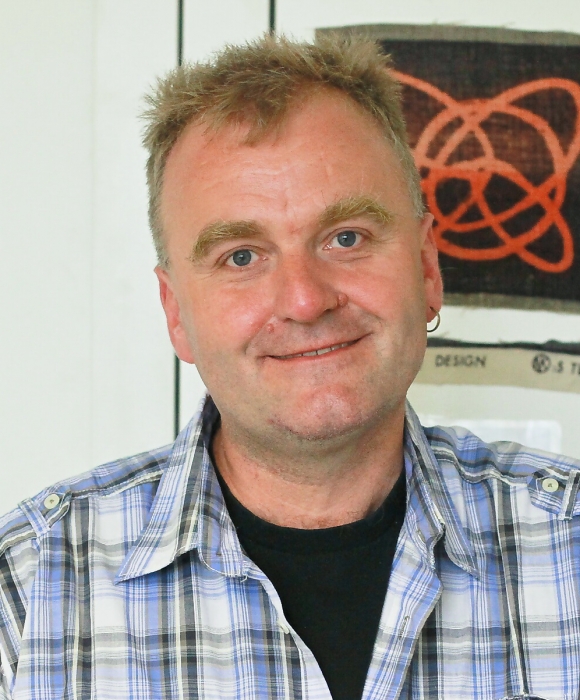
Helmut Cölfen, Professor of Physical Chemistry
“Without the core facilities, I would not be able to carry out my research at the same level as I currently am able to. While it would be possible to carry out some measurements via external cooperation, the direct on-site measurement of samples by the staff who produced them is important and sometimes absolutely necessary when it comes to sensitive samples”.
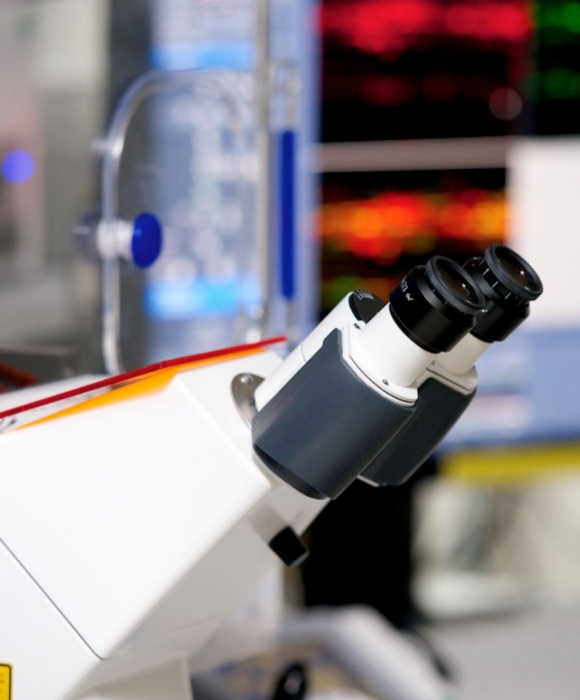
Core Facilities at the Universität of Konstanz
At the University of Konstanz, the idea of shared infrastructure was first realised in the field of physics, explains Elisa May: “By pooling large and complex devices in a single space where they are maintained by one person, our Nanostructure Laboratory has been very effective in supporting its users in their research since 2006.
The core facilities concept was realised somewhat later in the life sciences, but it was precisely this area that the German Research Foundation (DFG) strongly promoted.
Here, too, the primary aim was to ensure a more efficient use of the equipment. The first core facility founded in the Department of Biology at the University of Konstanz is the Bioimaging Centre, which provides cross-cutting technology in the form of light microscopy that is used in all life sciences.
“With the foundation of the Bioimaging Centre, a certain trend reversal set in,” says Elisa May. The campus now houses more than 20 core facilities, which support research in the natural and life sciences as well as the humanities and social sciences. The Department of Biology alone has five core facilities. In chemistry and physics there are six, three in economics, sociology, psychology and sports sciences and six more in linguistics.
Important: Select facilities will be introduced one by one via our core facilities series in the CAMPUS.KN online magazine of the university. Stay tuned to learn more about the technologies and applications available on our campus!
The Bioimaging Centre (BIC)
From the day it was founded on 1 November 2008, the Bioimaging Centre has provided access to its scientific equipment to all university researchers. Biologists use it to examine various objects, ranging from tissue and cells to bacteria. For even smaller samples such as viruses, researchers use the Electron Microscopy Centre.
The Bioimaging Centre also offers access to so-called confocal microscopes that are used to create three-dimensional reconstructions of samples, thus providing spatial impressions of cells. It also has a high-resolution microscope, a technology for which Eric Betzig, Stefan W. Hell and William E. Moerner were awarded the Nobel Prize for Chemistry in 2014.
“It helps to close the gap between light and electron microscopy because it allows the investigation of even smaller structures such as individual molecules in living cells,” explains Elisa May. Living cell microscopy is thus a focus area of the Bioimaging Centre: The life of cells can be observed in real time, from cell division to cell death. It is possible to observe molecules in the cell.
Elisa May describes the process at the BIC as follows: “Users of our microscopy core facilities usually operate the device themselves. Once they have planned a project, they approach us. We discuss the project, provide advice on sample preparation and the choice of microscope as well as on how to handle the collected data and the appropriate assessment type. The users then take part in a training course in which they learn how to use the device of their choice. They can then reserve it and use it day and night for the duration of the reservation period. Should problems arise, the BIC technical and scientific staff provide advice and support”.
Alice Krebs, doctoral researcher in the working group of Professor Marcel Leist, Department of Biology
“I particularly enjoy working with the Bioimaging Centre. Especially in the early stages of my doctoral project, when my research required a lot of imaging effort, the feedback and support I received with regard to image and data analysis helped me enormously. […] Working with and at the BIC has earned us some very impressive visualizations and animations. We like to use them to showcase the work conducted in our research team and at the University of Konstanz as a whole or to illustrate our publications. Some of our images have also attracted wide interest from large cooperation partners such as Roche”.
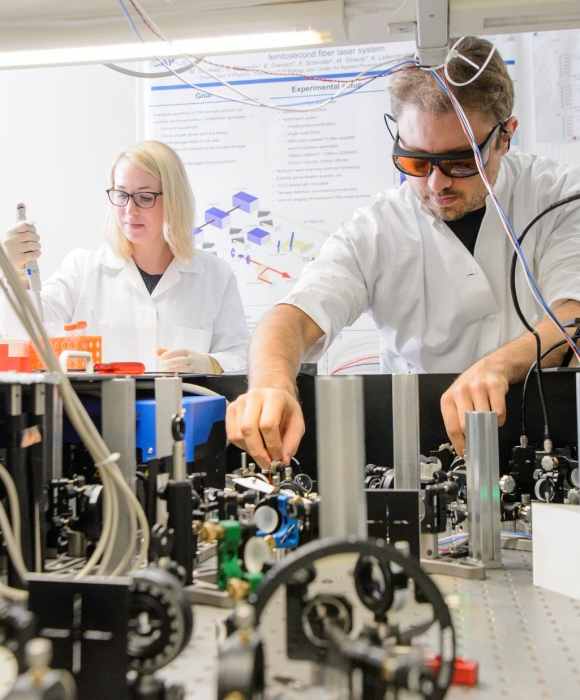
Elisa May says that in the early years of the Bioimaging Centre, she was responsible for caring for the equipment and providing user support. Since then, the BIC has grown considerably and the three members of the technical support team are now responsible for providing these services. In addition to the technical know-how, scientific expertise is also very important. The most frequently asked question is which microscopy method is best suited to answer the research question.
The BIC must have a broad knowledge of the potential and limitations of the different techniques and be able to assess very different research topics, from microbiology to material chemistry. The basic prerequisite for any work is, of course, that the equipment functions optimally. This is of particular importance for a core facility, which is not always a given in a single working group: “Doctoral students must first and foremost make progress in their research projects and should not be responsible for the maintenance of the equipment,” she clarifies.
To that end, the centre's technical staff stays in regular contact with the respective instrument manufacturers. In addition to now being responsible for coordinating the various inquiries, Elisa May – in consultation with her colleagues –determines who provides support for each project and focuses on procuring the financial resources necessary to both expand the equipment pool and keep it up to date with the latest technology.
“That is one of our main tasks: Users have to be sure that they will find a fully functional microscope at the BIC.” – Elisa May
Availability and demand
According to Elisa May, the core facilities concept – with the support of the DFG – has firmly established itself within the last five years. Most progress has actually been made at universities, which lag behind non-academic institutions in regard to establishing core facilities: “We can see that the need for advice and suitable structures at universities is particularly high. In terms of becoming an institutional fixture, and in regard to personnel structures and development perspectives, the core facility is still a novelty in the university sector.”
Short innovation cycles represent a major challenge. “You want to be up-to-date, but you also have to take availability and demand into account,” says Elisa May.
If, in consultation with researchers, a demand for newer technology actually emerges, the involved parties work together to search for an opportunity to acquire such technology. Through its infrastructure programmes, for example, our university makes it possible to modernise existing technologies as well as to establish new technologies that can significantly improve the quality of research: “It is often the case that a certain expertise is developed by a working group, resulting in a need that can ultimately lead to the establishment of a new core facility”.
The incorporation of new research infrastructure and core facilities at the University of Konstanz requires the input and coordination of the Committee on Research (AFF). Only after a pilot project has successfully completed the application process and the usual evaluations can it develop into an equipment centre. “It is important that this process always takes place in consultation with the users.”
Establishing core facilities at local level can also be advantageous with regard to the overall scientific landscape: For example, since light microscopy centres in Germany organised themselves into a network, the DFG invited tenders for a large-scale equipment initiative for light microscopy in 2018. “The entire scientific community stood to benefit from this”.
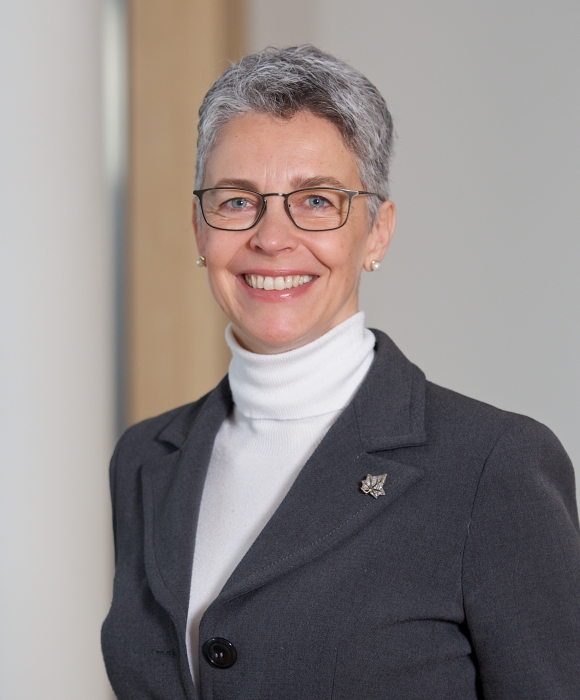
“It doesn't make sense to buy a technology just because it's fancy.”
Who looks after the data collected in the core facilities?
“The problem of data – data management and data analysis – is a challenge for all of us,” says Elisa May. “It can only be accomplished through a shared infrastructure. A shared concept is indispensable.” You can read more about research data management at the University of Konstanz in the next uni'kon issue.
In exchange with society
Core facilities at the University of Konstanz also serve to promote exchange with society. They not only open their doors to external users from industry and society, but are also involved in knowledge transfer and the promotion of the next generation of researchers. For example, in collaboration with other centres of the German BioImaging – Society for Microscopy and Image Analysis, the Bioimaging Centre has been participating in the “Maus-Türöffner-Tag” (open house day for fans of the children’s TV show “Sendung mit der Maus”) for several years.
For the University of Konstanz, ensuring transparency in general, and providing young people the opportunity to work with scientific equipment in particular, is very important. During the last “Maus-Türöffner-Tage” in 2017 and 2018, the young researchers were guided by experts in examining how their fingerprints look under the microscope, what is hidden inside a skin cell, and how a microscope is actually constructed. Check out the picture gallery for some impressions of this event.
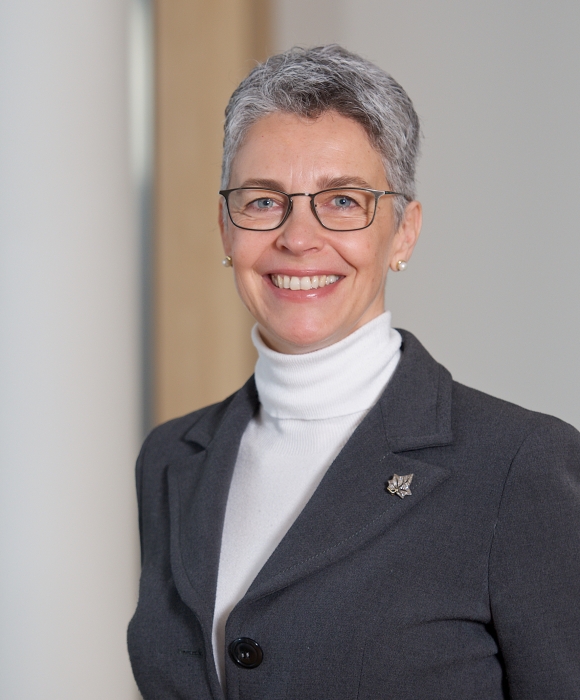
Professor Elisa May is the director of the Bioimaging Centre (BIC) at the University of Konstanz and founding chairwoman of the “German BioImaging – Society for Microscopy and Image Analysis” (GerBI-GMB), which is also based at the University of Konstanz. This association was founded in 2017 and emerged out of the German BioImaging network funded by the German Research Foundation (DFG).
It aims to define framework conditions for scientific imaging infrastructure in Germany and to further professionalise the shared use of existing equipment infrastructure, which is regarded as excellent in Germany. The GerBI-GMB is funded by the Carl Zeiss Foundation.

